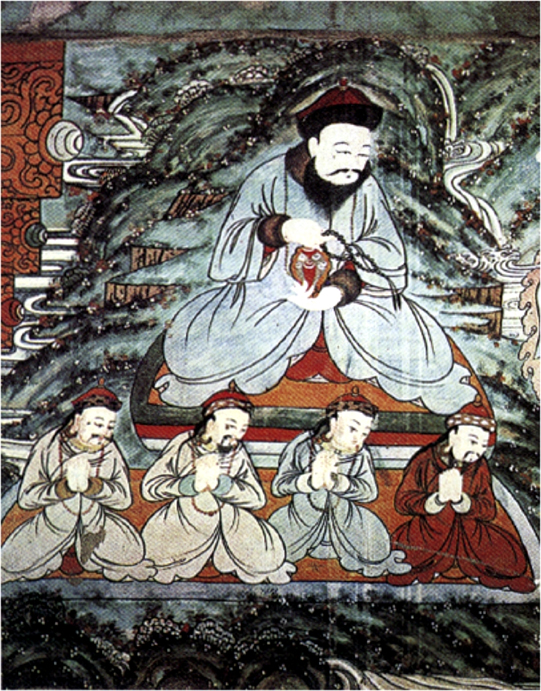Altan Khan led a federation of Mongol tribes that occupied the region called Chahar in today’s Inner Mongolian region of China. His people were formidable because of their proximity to Ming China’s capital Beijing (Peking), their wealth among Mongol tribes because of trade, and their prestige as the legitimate successors of Genghis Khan.
Under his grandfather Bayan Khan, also known as Batu Mongke (c. 1464–c. 1532), and then under him the Mongols came close to unity. Thus they were able to threaten China. He also forged a close religious alliance with the Yellow Hat Sect of Tibetan Buddhism.
After their ouster from China in 1368 by the Ming Dynasty (1368–1644), the Mongols broke into five groups that fought among themselves. As a result they did not realize their military potential.
  |
Altan Khan was important because he united the Chahar Mongols and began launching annual raids against Ming lands along the northern frontier, even threatening Beijing in 1550. In one raid in 1542, he reputedly took 200,000 prisoners and 2 million head of cattle.
Despite winning favorable trading rights with the Ming, the Mongols continued to raid Ming outposts for the next two decades until 1570, when Altan Khan’s grandson defected to the Ming governor Wang Chonggu (Wang Chung-ku) at Datong (Tatung). A new Ming emperor was ready to reverse the hostile relations between China and the Chahar Mongols.
Thus he treated the Mongol defector as a guest, assured Altan Khan of the young man’s safety, and began negotiations that culminated in a settlement in 1571. It provided for the establishing of many trading points along the Great Wall of China and a Chinese title for Altan Khan as the Prince Shunyi (which means “compliant and righteous prince”).
 |
| Statue of Altan Khan in Inner Mongolia |
Altan Khan also played an important role in the religion of the Mongols. Tibetan Buddhism had won increasing numbers of converts among Mongols since Kubilai Khan’s acceptance of that faith in the late 13th century.
In 1577, the head of the Yellow Hat Sect in Tibet visited Mongolia. Altan Khan used the occasion to declare Tibetan Buddhism the official religion of all Mongols and conferred on that cleric the title Dalai Lama, which means “lama of infinite wisdom” in Mongol.
The title was conferred retroactively on that lama’s two predecessors and is carried by his successors to the present. In return, the Dalai Lama conferred on Altan Khan the title king of religion. Thus began the close relationship between the Mongols and the Yellow Hat Sect of Tibetan Buddhism.
   |
In 1589 Altan Khan’s great grandson was proclaimed the reincarnation of the third Dalai Lama, becoming his successor as the fourth Dalai Lama. He was the only non-Tibetan to hold that title. The Mongol-Tibetan axis that resulted has persisted to the present and plays an important role in the politics of Inner Asia.
Significantly the so-called conquest changed Mongols from ferocious warriors to pious lamas and laymen, effectively ending their dreams of future conquest. Altan Khan’s early raids struck fear to the Chinese over the revival of Mongol militarism, but his conversion and that of his followers to Tibetan Buddhism ended that threat.
